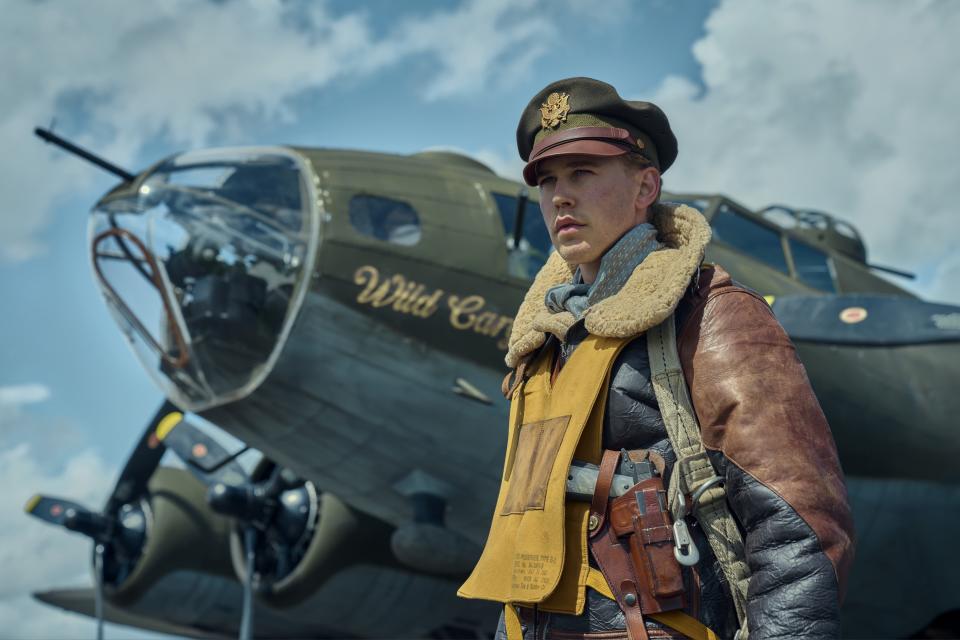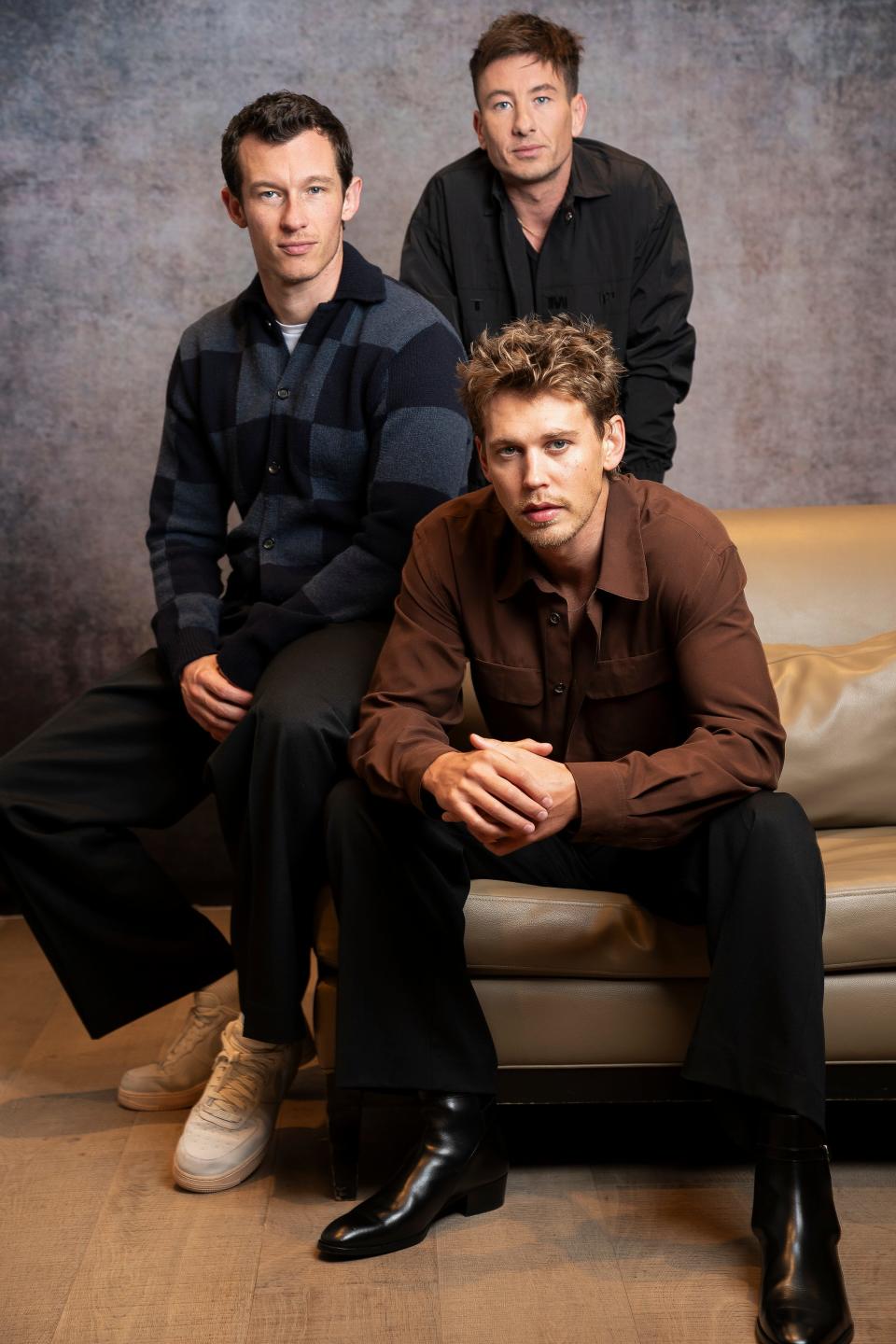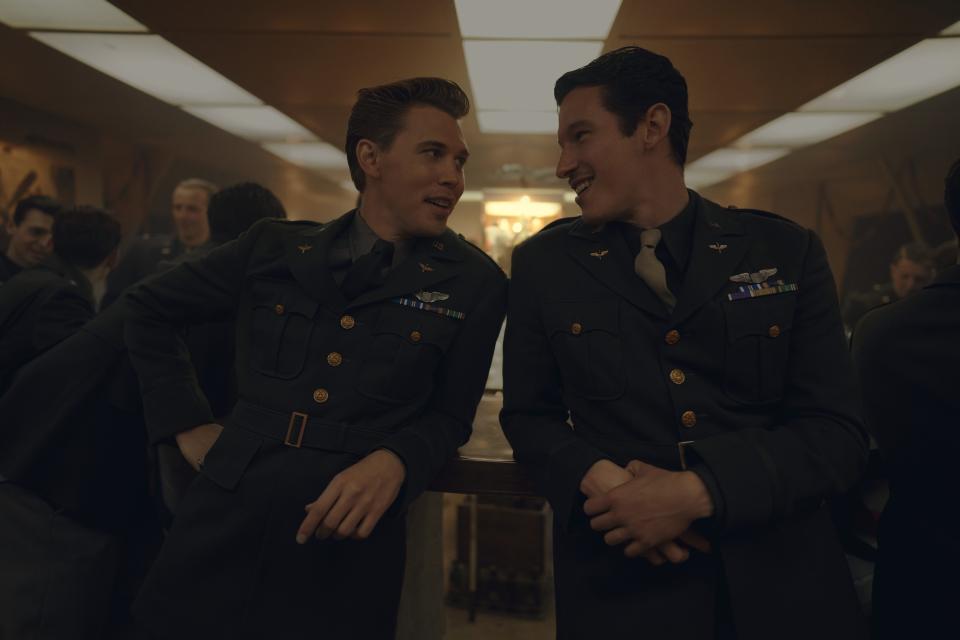Fact-checking Apple TV's 'Masters of the Air': What Austin Butler show gets right (and wrong)
Author David McCullough ("John Adams") had some advice for historian Donald Miller when word arrived that Miller's epic tome on the 100th Bomber Group, “Masters of the Air,” would become a $250 million, nine-episode Apple TV+ series (streaming Fridays).
“He said, ‘Don, you've got to watch out, make sure they don’t Hollywood-ize it!’” Miller says with a laugh. But he'd worked with producers Tom Hanks and Steven Spielberg before, on HBO's 2010 adaptation of his book “The Pacific," "so I had great confidence.” Gary Goetzman was also an executive producer on "Masters."
Miller’s book tells the story of the young men in the bomber group that helped turn the tide in World War II with its high-risk missions over Germany. The series, also based on Air Force records and interviews with 100th veterans, largely sticks to facts about the lives of its American protagonists, with an occasional composite character thrown in to keep the story moving.

But Miller provides some additional background on some the themes and issues in “Masters of the Air.”
Are the characters in 'Masters of the Air' real people?
Miller says all the major players in the series were real World War II veterans, notably the lead roles that included Maj. Gale Cleven (Austin Butler), Maj. John Egan (Callum Turner), Lt. Curtis Biddick (Barry Keoghan), Lt. Harry Crosby (Anthony Boyle), Maj. Robert Rosenthal (Nate Mann) and Lt. Roy Claytor (Sawyer Spielberg).
“The big difference between making this and ‘The Pacific’ is that back then, a lot of those vets were still alive and the actors could call them, or we’d have them on set, and they’d tell us what really happened,” says Miller. “With this, I was practically the only one who had known or interviewed many of these real vets. So the actors would come to me, and I’d help best I could.”
We talk to the stars: In 'Masters of the Air,' Austin Butler, Barry Keoghan and cast formed real friendships

Did the British and American soldiers really have antagonistic relations?
Miller says many veterans he has interviewed “had great relationships with RAF (Royal Air Force) pilots, who they’d meet up with on leave in London.” But tensions that often surfaced among members of the Allied forces were real.
“It was mostly over the fact that the Brits thought American flyboys were pampered,” he says. “The Americans were much better paid, they wore snappy uniforms, seemed a little more dashing and in the competition for women they seemed to have the advantage. Money in the pockets, Sinatra records, the latest popular culture, foreign accents, these dashing Americans, the exoticism of it.”
Critic's take: Review: Austin Butler's WWII epic 'Masters of the Air' is way too slow off the runway
How dangerous and deadly were those B-17 bomber missions?
“I don’t think you’ll find combat anywhere in history as intense as these air fights,” says Miller. “You’re in an aluminum tube so thin a guy with a screwdriver could punch a hole in it. German (fighter pilots) would aim for the pilot and co-pilot, and a lot of pilots were beheaded by gunfire.”

Even if your plane did not succumb to flak or enemy fire, living through a bombing raid once, let alone dozens of times, frazzled nerves, he says. “The noise is horrific, there are no seats, there are things flying all over the place. And it stunk already of cigarette smoke and cordite and the smell of human blood. And you couldn’t take evasive action; there are no foxholes in the sky.”
Were American prisoners of war really left to their own devices in German camps?
Miller says “Masters” scenes accurately depicted Egan, Cleven and other captured bomber group members building homemade radios and scheming to escape camps run by German Air Force personnel.
“Sure, a lot of Jewish (American) soldiers were worried about being hauled out of the barracks and shot, but it only happened if you tried to escape," he says. "By and large you were left alone under your commanders to organize your day. Mostly they tried to mess with the goons, as they called them, making plans to get out like you saw in ‘The Great Escape’ or ‘Hogan’s Heroes.’ But as the war neared its end, it was tense. If the SS (Nazi secret police) took over the camps as they feared, there was no telling what would happen.”

What stories of the 100th Bomber Group were left out?
“Well the series is over nine hours long, but with a story this complex you still have to leave things out to move the story along,” he says. “But I did want to include something about the little-discussed treatment of the airmen by the Swiss.”
Miller says a number of Swiss officials had ties to the Nazis, and when Allied airmen wound up in Switzerland, which was neutral in the war, they were shipped off to high mountain camps. “We were hoping to tell the story of airmen who suffered in these Swiss camps. The guys really felt helpless, it was a horrible and unknown part of the war, but we couldn’t work it in.”
This article originally appeared on USA TODAY: Is 'Masters of the Air' based on a true story? Fact-checking the show
